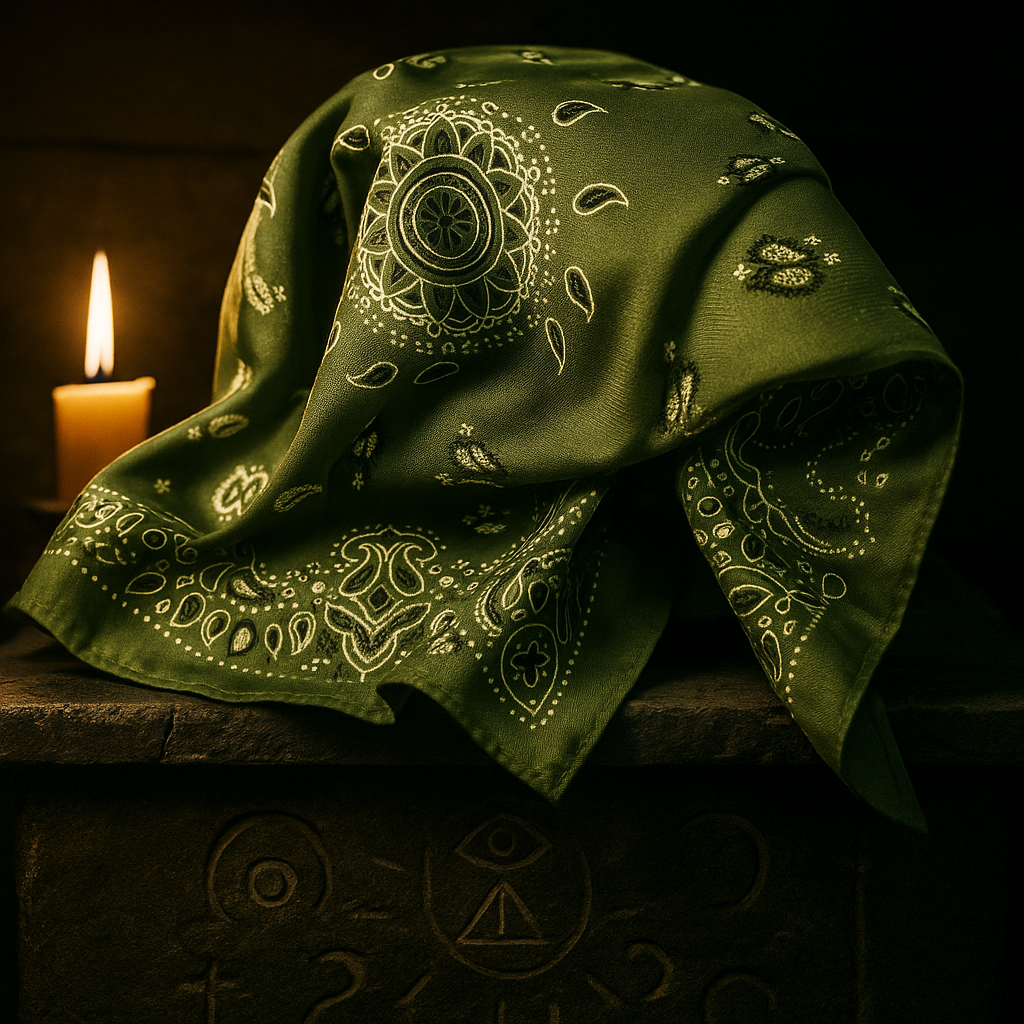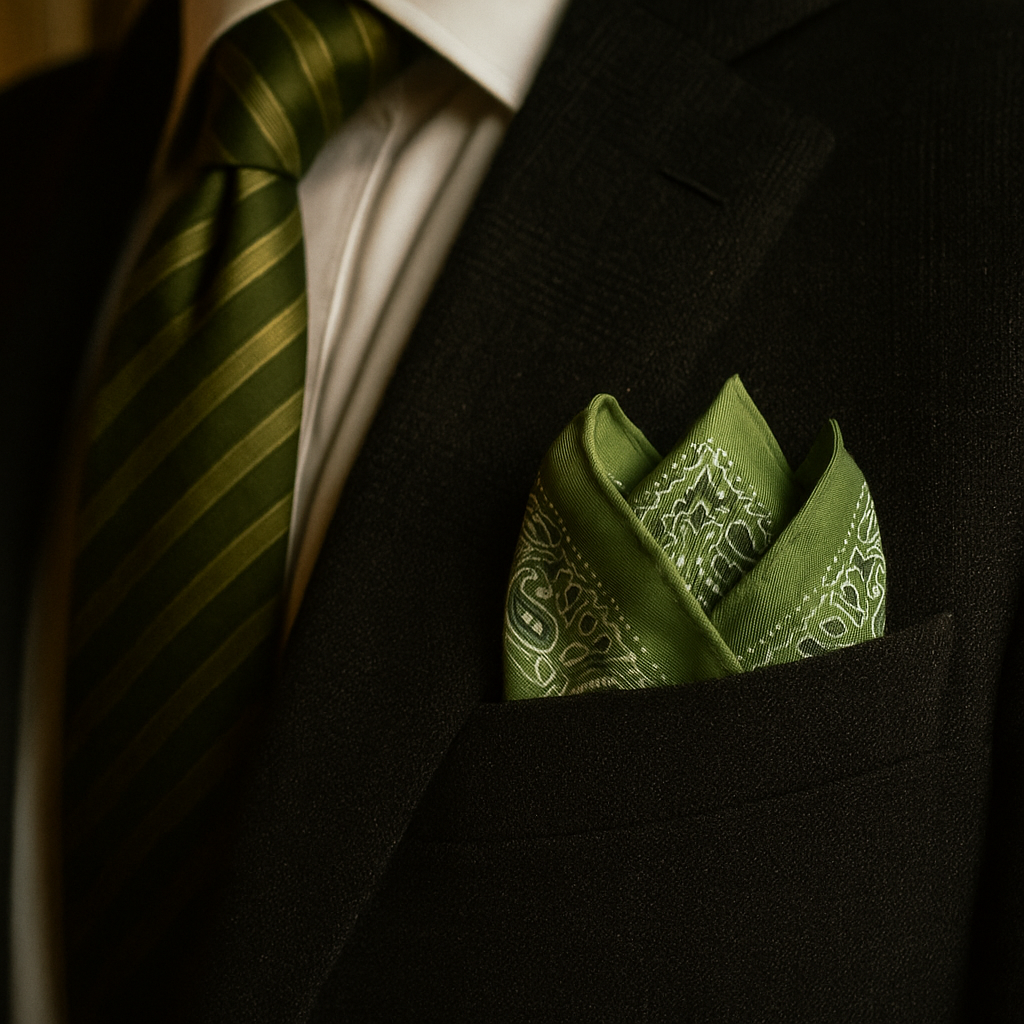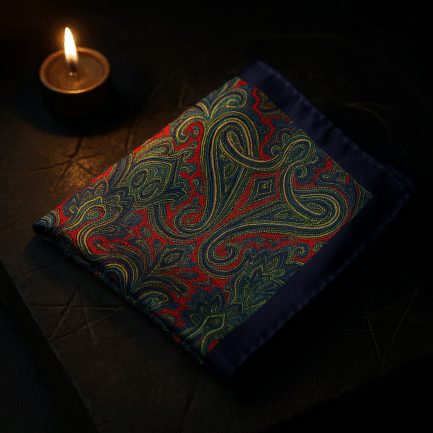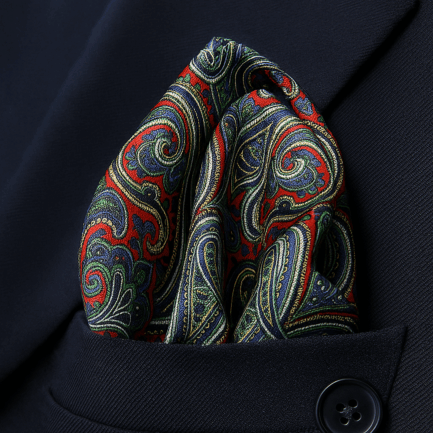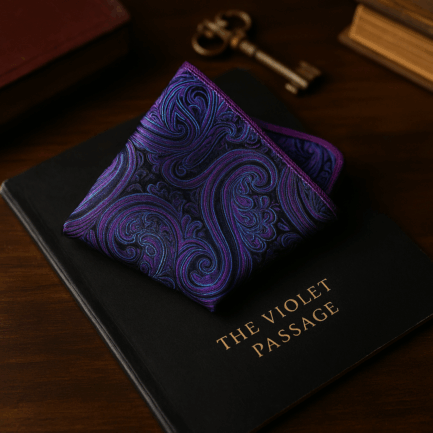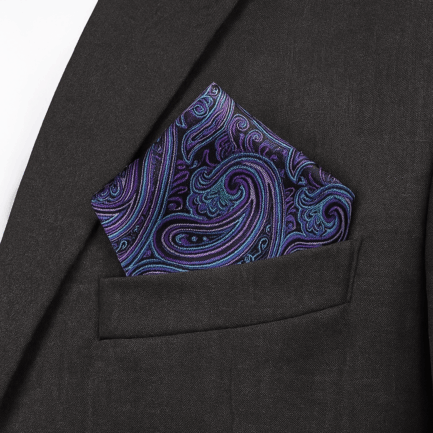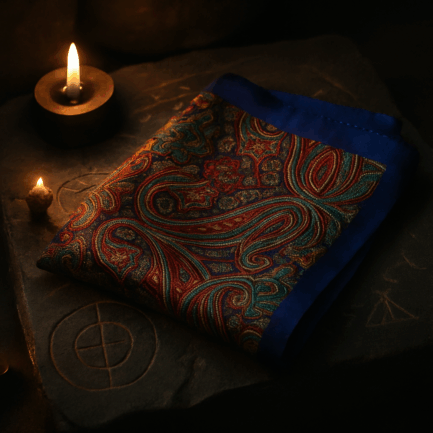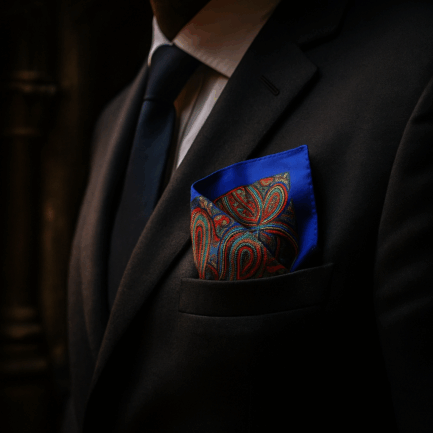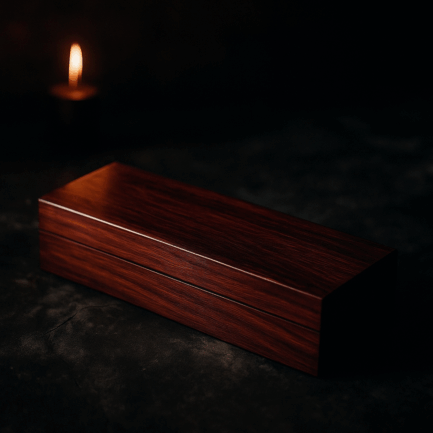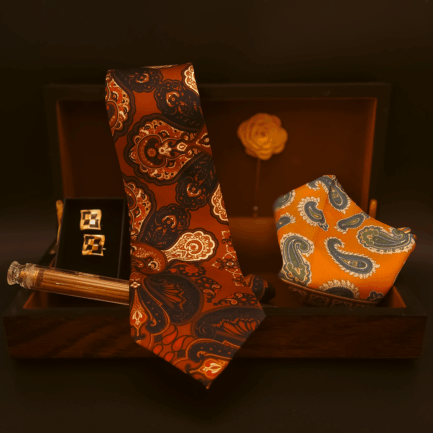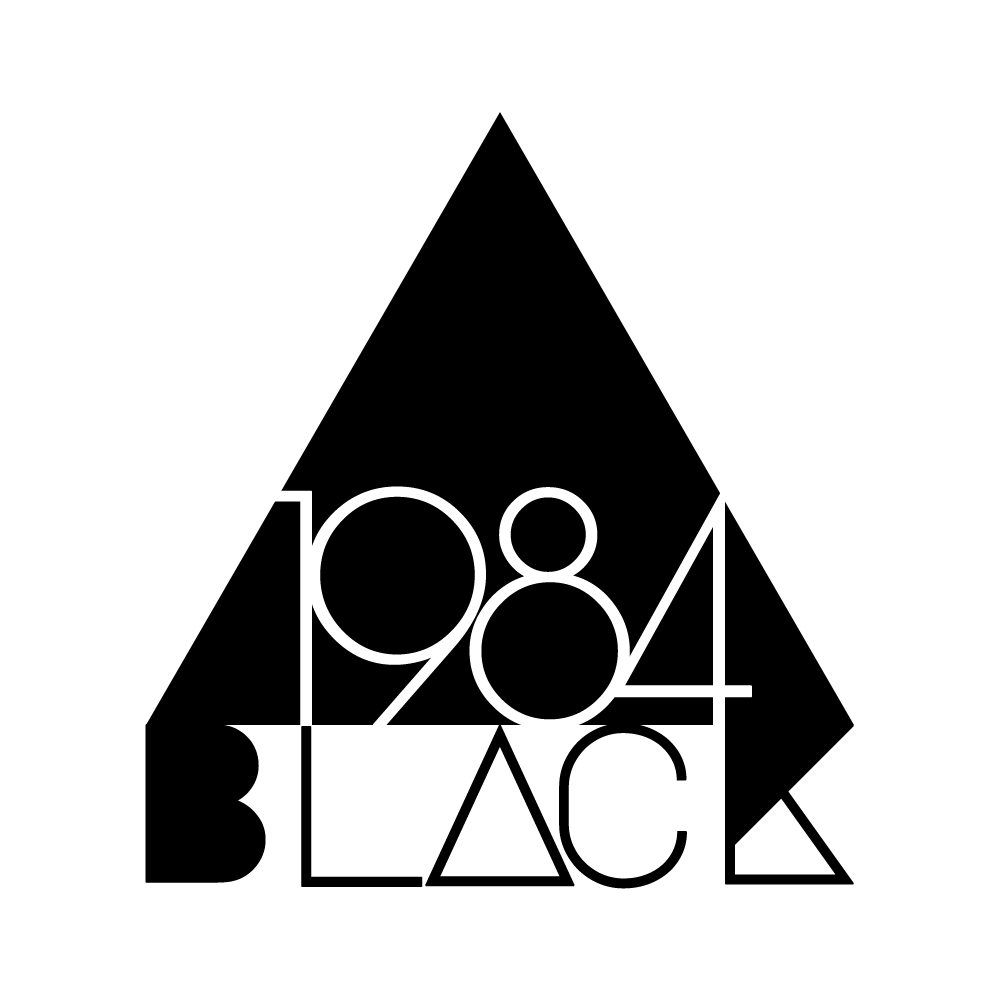Some garments are folded.
Others are encoded.
The Jade Protocol is a pocket square woven in muted green, etched with precision paisleys and quiet sigils. Its texture is firm, not stiff—meant to be folded with purpose. The pattern is not ornamental. It is procedural. Every curve, a directive. Every motif, a marker.
This is not fabric.
It is field equipment in silk disguise.
Details:
- Material: Woven polyester with a structured finish
- Dimensions: 22 x 22 cm
- Finish: Matte touch with light luster; stitched edge
- Design: Geometric paisleys and encoded botanical motifs in olive and sage
- Best paired with: black, khaki, or charcoal
- Ideal fold: The envelope, or the angular point
The Story: “The Jade Protocol”
It appears only once in the archives: a fragment of decrypted intel, 1963, referencing a textile marked Jade Protocol. The square itself—found decades later beneath the House of the Black Frame—was hand-stitched, untagged, and folded flat in a lockbox beside a rusted compass and a single black feather.
Whispers say it was not worn by commanders or architects—but by observers. Those assigned not to alter outcomes, but to record them. Not in ink, but in placement. Positioning the square at the collar meant readiness. Left chest, acknowledgment. Folded inward, completion.
To wear The Jade Protocol is to signal that you do not intervene—
You witness. You archive. You remember.
It is not a flourish.
It is a silent ledger.
Folded. Worn. Understood.

